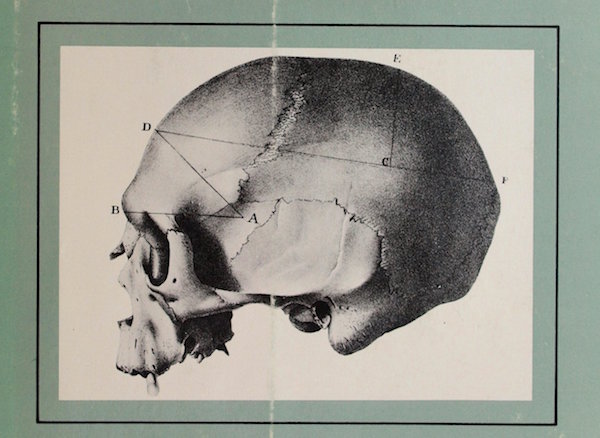With the recent protests at Middlebury College over the invitation of Charles Murray as a speaker — and the ensuing protests about the protest — one key point seems to have been missed. Professor Murray is not too terribly different from Donald Trump: both propagate fake news.
As a Northwestern University professor who has researches on, publishes on, and teaches African American and African Diaspora studies, I admit Murray’s fake news may not immediately threaten national security, but it does enjoy an insidious history as old as the United States (older, actually) and falsely enjoys the status of fact even among established academics and scientists like Murray — something even Trump’s fake news struggles to do.
Contrary to what many assume (including the majority of students in my classes), race was not a scientific discovery borne out by a well-considered hypothesis and rigorous testing much less conclusive results. Instead of scientists, it was 18th- and 19th-century European and U.S. philosophers and politicians who first asserted the existence of “natural” racial hierarchies. In the almost 300 years since this invention, no biologist or even geneticist has ever found a biological basis for race — despite decades of claims that researchers are “on the cusp” of finding it. Indeed, we might reflect on the fact that while scientists have discovered proof of the Higgs boson, or “god particle,” genetic proof of race eludes us still.
That the notion of biological race is fake news confounds many — after all, it seems black people and white people are very different physically. But what makes a black person black? Skin color? — but one can find black people who are in fact “lighter” in complexion than many white people. Hair? Facial features? — but not all black people have curly hair and we certainly don’t share the same facial features. We do not, contrary to what comedians, politicians, sportscasters and other media pundits might assert or imply, share the same culture, language, politics, or body type.
This lack of one single defining feature of commonality has not stopped fake news about race from flourishing. Charles Murray and Richard Herrnstein’s The Bell Curve infamously argues that African Americans lack the genetic wherewithal for normative intelligence, but fails to provide proof that this gene even exists. Indeed, as critiques of the book emerged, attacking its paucity of actual evidence, not to mention the rather unscholarly massaging of data to support its conclusions, the authors were lauded for their questionable efforts.
To be clear, I understand Middlebury professor (and invited moderator) Alison Stanger’s outrage over how badly she was treated by protesters at Murray’s event. Yet Stanger’s claim that “we need reason, not emotions” belies the fact that the fake news about race comes from emotion, not reason, because it’s always composed of assertions that lack a clear rationale. When Thomas Jefferson writes, in Notes on the State of Virginia, that Africans mate with orangutans, it is hard to see how reason, not emotion, fuels this statement. We must also question philosopher Immanuel Kant’s insistence that Blacks “have no feeling that rises above the trifling” as reasonable (while noting the irony of a claim made about frivolity itself made so frivolously). In other words, while Charles Murray may make his claims in a steady voice with a smile, the basis of his beliefs rest on the same shaky ground as birtherism.
This fake news does not only flourish within the realm of academic studies seeking to establish black inferiority to whites — it also exists in seemingly sanguine studies that seek to celebrate supposedly advanced abilities of some racial minorities.
A recent New York Times op-ed by science writer Moises Velasquez-Manoff asserts one of the more seemingly anodyne bits of fake news about race: according to the author, “multiracial people are more open-minded and creative,” an old canard that can actually be traced back, as I point out in my book Becoming Black, to the “father of modern racism,” Arthur de Gobineau who, in his 1400-page essay on the inequality of human races bizarrely opines that biracial people make great artists because they blend the creative frenzy of Blackness with the calm reason of Aryans.
There are fundamental problems with the reasoning, beginning with exactly whom the author’s cited study chose as subjects, and exactly how “open-mindedness” and “creativity” were quantified. Equally important, we must ask where the hypothesis for this study first emerged, and if the researchers are aware that interracial mixing not a new phenomenon but some 3,000 years old — in other words, most of us already enjoy mixed race ancestry.
To be sure, the op-ed’s argument — that a diversity of thought leads to better results — is borne out by the fact that U.S. research universities rocketed to the top tier of the world only after they began to admit more students from diverse backgrounds: women, the working class, and, finally racial and sexual minorities. Yet diverse views and attitudes are not genetically fixed, as this article seems to imply, and one cannot simplistically equate race with culture, much less a collective culture with a collective mindset. Clarence Thomas’ experiences with racism did not make him a diverse thinker — and I doubt that Ben Carson’s creative take on New World slavery is what the researchers intended to validate.
As Trump and his followers are called to the carpet for his flurry of false accusations and implausible denials, we might also acknowledge that no matter how outrageous their claims, we often dabble in more than a few unproven and blanket assertions ourselves. To err, it seems, is human, rather than the result of a specific racial or political inclination.


